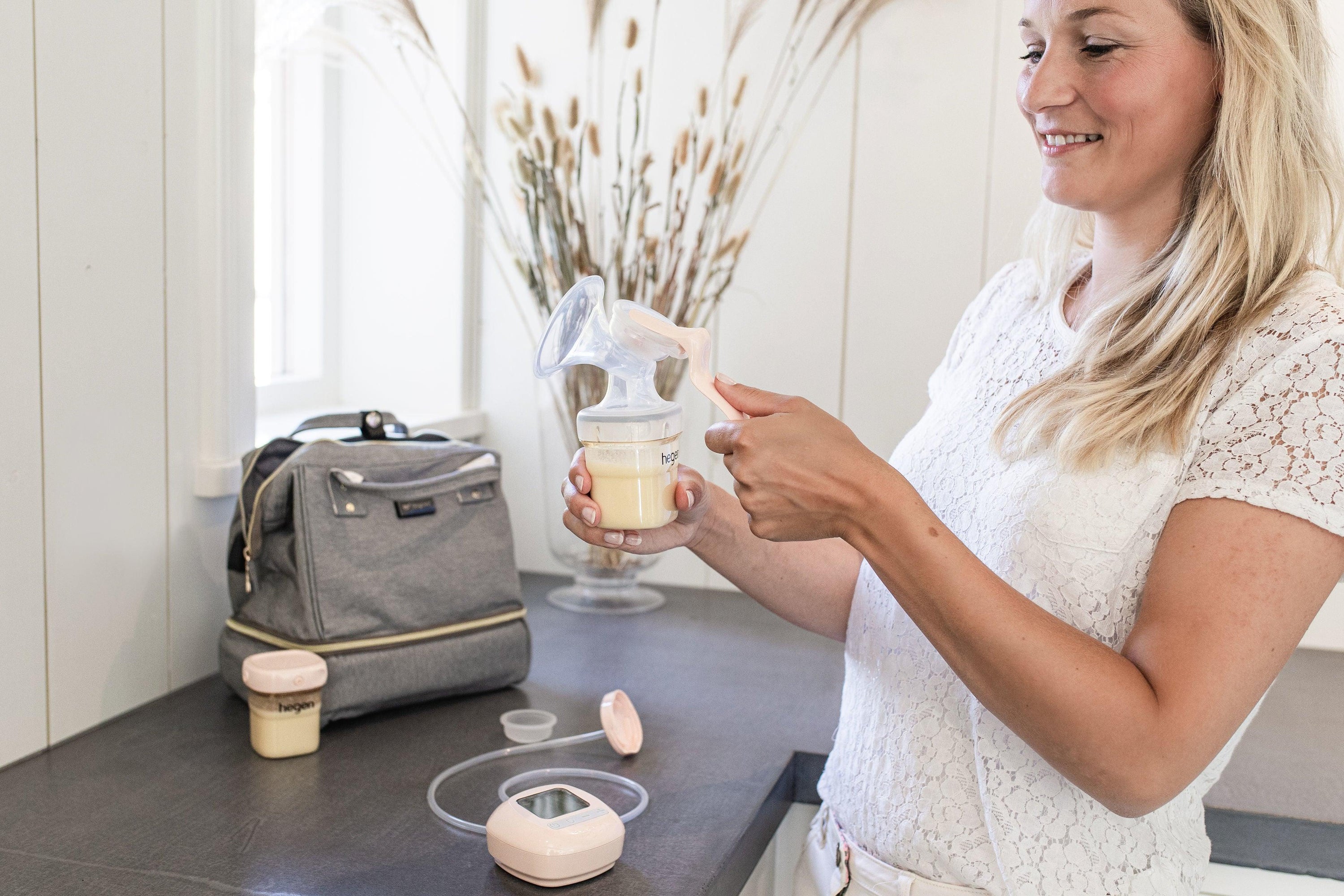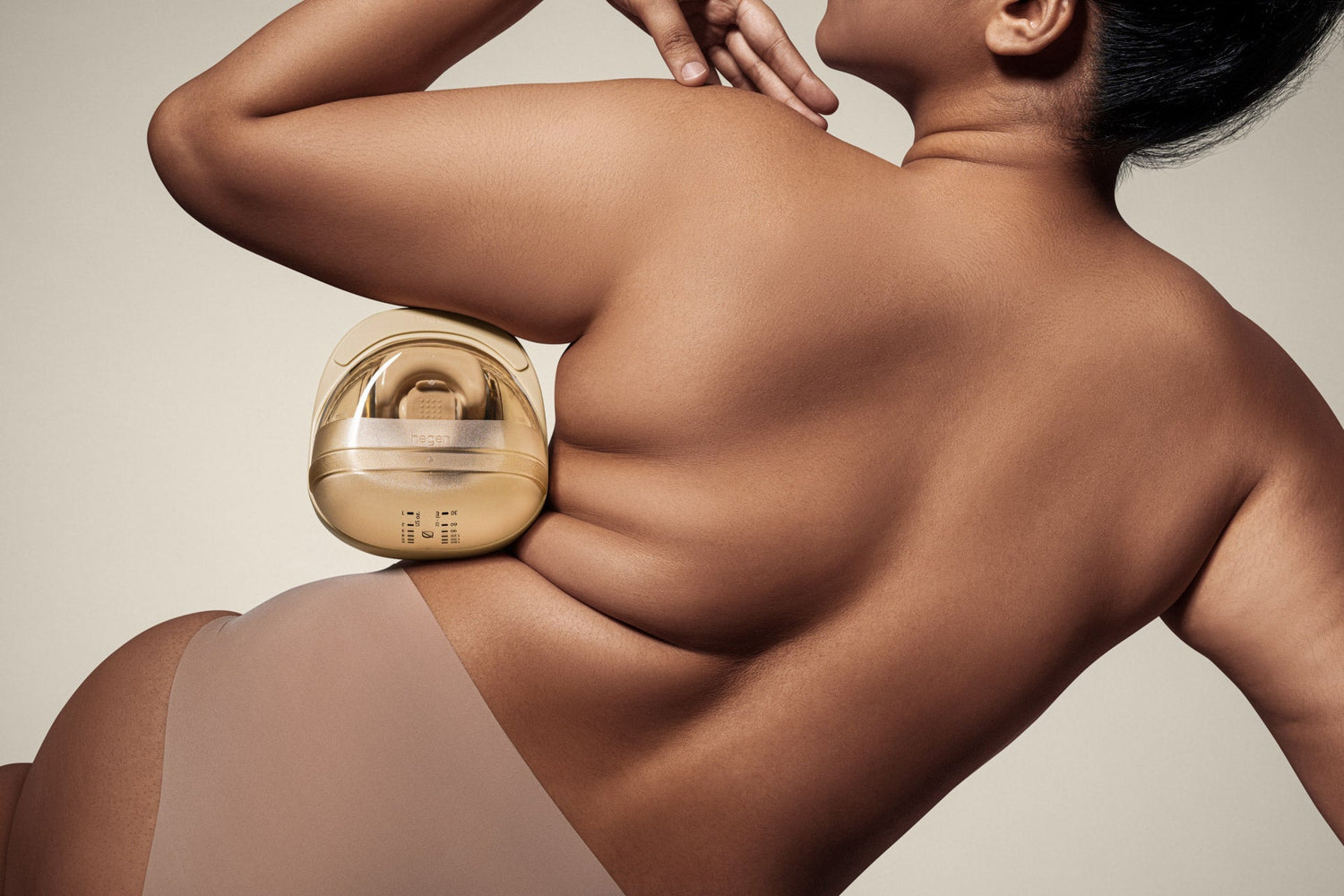Choosing the right breast pump is a critical decision for breastfeeding mums. The range of products on the market can make the decision quite daunting, especially when deciding between manual and electric breast pumps. Both types have their unique features, advantages, and drawbacks. This guide helps you decide which is better.
Difference Between Manual and Electric Breast Pump
The main difference between manual and electric breast pumps is their operation mechanism. Manual pumps require physical effort to create suction and express milk. On the other hand, electric pumps use an automatic system, relieving mums from the exertion of manual pumping and often providing a faster experience. However, each type has pros and cons.
1. Portability
Portability is a factor for many mums deciding which is better between a manual or electric breast pump. Manual breast pumps are more portable, lightweight, smaller, and easier to maintain and clean.
Although travelling mums can also pack away and carry electric breast pumps wherever they go, these pumps can still be slightly bulkier. Some models are battery-operated, requiring mums to carry extra batteries or chargers. Electric pumps offer robust pumping performance but are less portable than manual pumps.
2. Pressure
The pressure from an electric breast pump might feel a bit intense for mummies new to breastfeeding or those with sensitive breasts. Manual pumps provide an ideal way to ease into the pumping routine and adjust the pressure to a comfortable level.
Electric breast pumps have adjustable settings, allowing mums to control the suction intensity. Finding the perfect setting may take trial and error, but once found, electric pumps can provide consistent and efficient pumping. If you’ve tried an electric pump and find the suction too strong, try decreasing the pressure. Otherwise, a manual breast pump may be a better bet for you.
3. Noise Level
An electric breast pump will emit a buzzing sound no matter how low the volume. Though technology in recent years has made the sound from electric pumps less noisy, the sound can still be a challenge, especially when you have a baby that startles easily. If being quiet while pumping is necessary, then the manual pump trounces an electric one in this department.
4. Power Source
Manual breast pumps don’t require a power source to operate. You can use them anywhere, anytime, without electricity or batteries. The manual breast pump is an excellent solution if you’re out on the go and need to express milk quickly.
Electric pumps, while needing a power source, come with options. Many models offer AC adapter and battery operation, ensuring pumping is not interrupted, even during power outages or when travelling.
5. Pumping Efficiency
If you think your breasts have been fully drained after a latch or pump, think again. You can express more milk with a manual breast pump. Some mums have reported being able to express more milk with a manual pump due to their control over the suction and rhythm - which helps with their overall supply.
Double electric breast pumps like the Hegen PCTO™ Double Electric Breast Pump (SoftSqround™) can express milk from both breasts simultaneously, saving precious time for busy mums. Their automated rhythmic suction often mimics a baby’s natural nursing pattern, leading to efficient and comfortable milk expression.
6. Cost
Manual pumps typically have lower upfront costs, making them an attractive option for mums on a budget or who only need to pump occasionally. However, manual pumping can be physically tiring, especially for mums who pump multiple times daily.
While generally more expensive, electric breast pumps offer greater long-term convenience and efficiency. The initial cost may be higher, but the investment can be worth it for mums who frequently pump or have limited time.
Choosing the Right Breast Pump for Your Lifestyle and Needs
The breast pump you choose should match your specific needs and circumstances. Deciding when to use a manual breast pump or an electric breast pump may rely on several factors, such as your lifestyle, pumping frequency, and individual preference.
For First-Time Manual Pump Users
A manual breast pump is a good start for mums who are trying out pumping for the first time, as they offer full control over your pumping experience. This pump offers flexibility to control the speed and pumping intensity, ensuring comfort at every session.
For Regular Pumpers
For mums who pump regularly or do power pumping, electric breast pumps can be lifesavers. They offer efficiency and automated operation, relieving you from the manual labour associated with hand pumps. With adjustable settings, electric breast pumps like the ones offered by Hegen can make the regular pumping routine less strenuous and more comfortable.
For Working Mothers
Double electric breast pumps are ideal for the unique needs of working mothers. These pumps allow you to express milk from both breasts, saving precious time simultaneously. The convenience and speed offered by such pumps can significantly ease balancing work responsibilities and motherhood.
For Mothers of Multiples
If you are a mum of twins or multiples, the demand for breast milk can be intense. Double electric pumps can help you meet this high demand more comfortably. By enabling simultaneous pumping from both breasts, these pumps can also aid your body on how to increase breast milk supply for your baby.
For Travelling Mothers
Manual breast pumps are ideal for travel, as it demands portability and convenience. These pumps are easy to pack and carry, and don’t require an electricity source. They are also ideal as an emergency backup pump when overseas plugs or sockets fail or are incompatible, ensuring mothers can always rely on the handy manual breast pump to do the work! These features make these pumps ideal companions for a stress-free travel experience, ensuring you can express milk whenever and wherever you need it.
For Budget-Conscious Mothers
Manual breast pumps are an excellent choice if you are mindful of budget. They are generally more affordable than electric breast pump models but are reliable and effective. With Hegen’s PCTO™ Manual Breast Pump Module, you can enjoy the benefits of efficient milk expression without causing a dent in your wallet.
Hegen's Range of Manual and Electric Breast Pumps
Hegen’s extensive range of breast pumps including manual and electric pumps that cater to your unique breastfeeding needs. Our manual breast pumps prioritise convenience and flexibility, while electric ones provide a seamless, automated experience perfect for regular pumping. Our pumps come with multifunctional milk storage bottles designed to minimise milk transfer and to ensure that breast milk storage can be done efficiently.
With Hegen, expressing, storing, and feeding has become an effortless, single-container process. Discover a stress-free breastfeeding experience tailored to your lifestyle and needs. Explore Hegen’s comprehensive range of breastfeeding solutions today.





